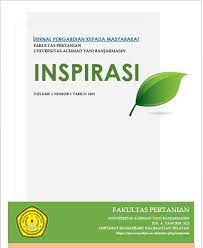PENYULUHAN BUDIDAYA CABE RAWIT (Capsicum frutescens. L) DI GAPOKTANHUT DUSUN KATUNUN DESA TELAGA KECAMATAN PELAIHARI KABUPATEN TANAH LAUT
Kata Kunci:
Cayanne, CultivationAbstrak
Cayenne pepper (Capsicum frutescens) is a plant that is suitable for development in the tropics, especially around the equator with an altitude of 0-500 meters above sea level. Even so, cayenne pepper can grow well up to a height of 1000 meters above sea level. For places that are too high, plant productivity will decrease, in the highlands cayenne pepper plants can still bear fruit. It's just that the harvest period is less than the lowlands. In addition, the production of seeds on cayenne pepper is less. This can be considered an advantage or a weakness. Because of course consumers like it but the weight of the fruit becomes light. Cayenne pepper currently cultivated in South Kalimantan is very diverse. In general, people are familiar with white cayenne pepper and green cayenne pepper. Even though every place has different kinds of cayenne pepper. Cultivating cayenne pepper is relatively lower risk than large chili. Cayenne pepper seeds can be obtained from previous harvests. Use fruit from the 4th to 6th crop. The fruit produced during this harvest period usually has optimal seeds. In the first to third yields, the seeds in cayenne pepper are usually still few. Whereas towards the end of the harvest period the number of seeds is large but the size is small. To choose good cayenne pepper seeds, choose some plants that are healthy and look strong. From these plants, choose fruit that is perfectly shaped, free from disease and pests. Then let the fruit grow old on the tree. Keywords: cayenne pepper cultivation

















